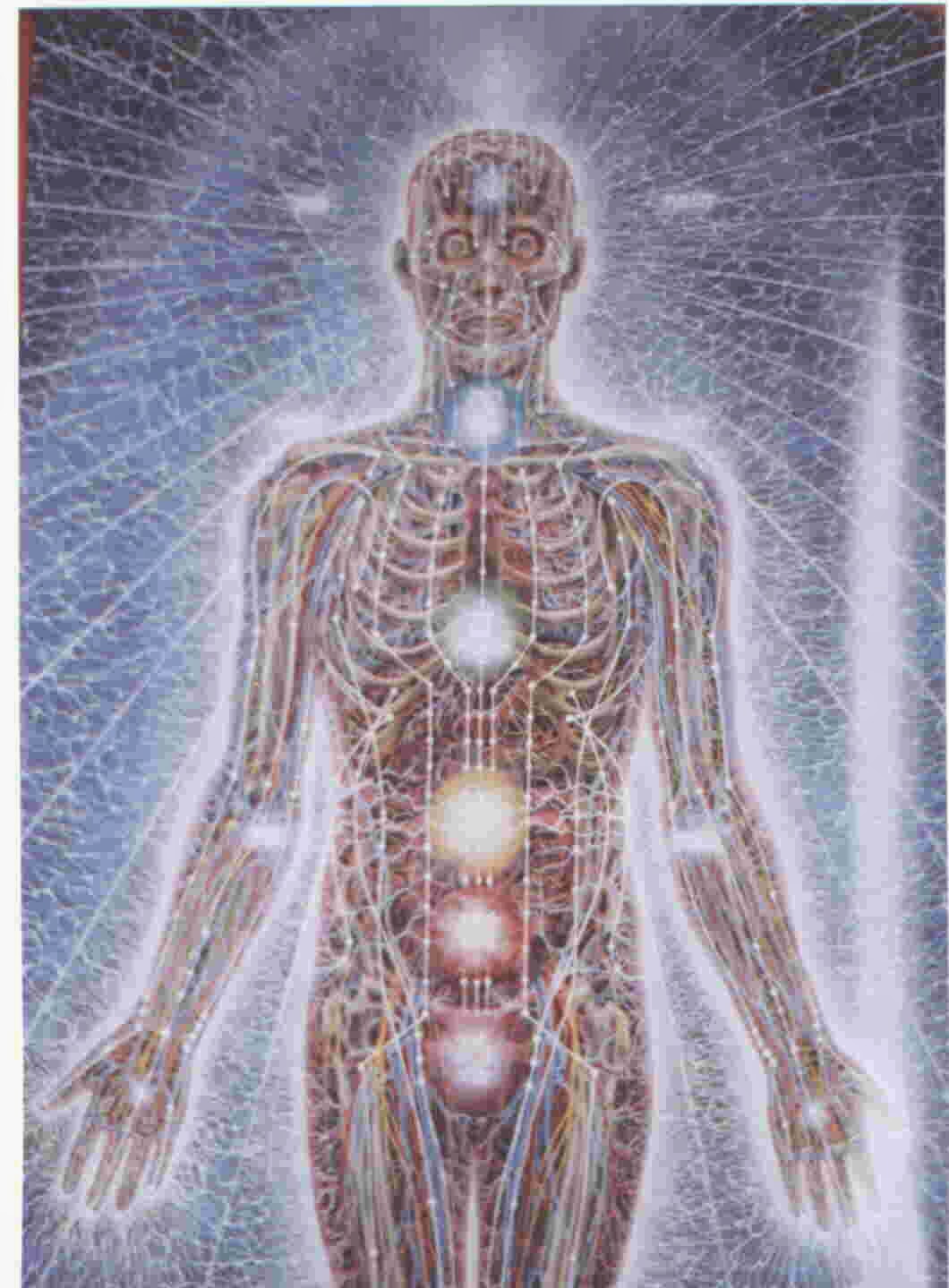Structure and Energy
 In my late-20's, I met an eccentric yoga teacher who later became one of the strongest influences on my teaching. Some of this influence included what I would consciously choose not to do, though many of his teachings still inform my yoga practice, and correspondingly, my yoga teaching.
In my late-20's, I met an eccentric yoga teacher who later became one of the strongest influences on my teaching. Some of this influence included what I would consciously choose not to do, though many of his teachings still inform my yoga practice, and correspondingly, my yoga teaching.Under the tutelage of Roger Eischens, I became a student of energy. Whether we call this energy chi, qi, prana or Floyd, an awareness of energy in the body is found in many healing modalities.
At first, I felt that energy was tangential to structure: There was body alignment, strength and flexibility... And then there was energy.
With further training and practice, however, I began to feel how alignment could facilitate feeling energy moving in my body, and how energy-based techniques could influence alignment. Rather than being two distinct systems, Roger showed me that they were the two sides of the same coin.
Roger was famous for containing multitudes. As I mentioned previously, I consciously forgot some of his teachings, while other teachings I've treasured and nurtured. Also in the vein of two sides of the same coin, some of Roger's teachings I both treasure and question.
In the late 1990's, Roger was teaching a therapeutic session to a well-worn athlete. This guy had worked and trained hard, and if his body were a pair of corduroy pants, most of the fuzziness of the corduroy would have been worn off.
Upon learning that the athlete's knees were largely devoid of cartilage, Roger quipped you don't need cartilage, you just need energy. And with that seemingly naive segue, Roger showed the old athlete poses for the arches of his feet, poses to realign his shins, and poses to realign his shoulder blades. After each pose, the man was standing straighter and looking more filled with vitality - as if an energy was being rebooted, and flowing more freely in his body. By the end of his short session, the man reported being free from knee pain for the first time in many months. Despite seeming unlikely, Roger's claim to have used structure to awaken energy-flow did seem to have positive merit.
Since then, I've learned to respect when a joint is worn, to respect the limits of joints, and to avoid straining whatever cartilage may be remaining. And while working with the structural body, to remain attuned to the flow of energy in the body. This energy may be poorly understood in the West, but it can contribute mightily to vitality and well-being. In working with techniques that realign the energy-body, in tandem with techniques that realign the structural-body, yoga therapeutics can be a powerful path for transformation and healing.



Comments
Firstly - it's been 14+ years since I last studied with Roger, so what's being taught as Eischens Yoga today may bear no resemblance to what Roger was teaching back in the day. Maybe Eischens Yoga has moved in a different direction, too?
That being said, there are a few reasons I left the Eischens Yoga fold. One was the observation that using effort to realign the body often results in layering tension on top of tension. Since it was tension that tended to pull the body out of alignment, I developed a technique that first invited relaxation (The Three Fundamentals), and then invited students to explore the coexistence of appropriate effort with the Three Fundamentals.
The other reason was pedagogical. The mind can comfortably hold 3-5 items in short term memory, and the Eischens system often asked students to do many simultaneous actions, all at the same time. You could see the tension on people's faces, and feel it in the room as people struggled to hold many different cues in awareness and overwhelmed their short-term memory. In addition to focusing on fewer simultaneous cues to help improve retention, Alignment Yoga has also explored various ways to use language to facilitate learning that are different than how Roger used to teach.
The other reason I left the Eischens fold was about autonomic state. I observed that many of the residents of Roger's farm (Cress Spring Farm) seemed to become more fragile and less resilient as they deepened their yoga practices. As I desired to become more resilient through my yoga, it seemed like a different direction was in order. After several years of research, I learned that the way we were breathing in Eischens Yoga was contributing to our chronic autonomic upregulation, and that all breathing was not created equal.
As a result of this research on autonomic state, the 3rd fundamental (full commitment exhale) and its logical segue into Authentic Breathing became a pivotal part of Alignment Yoga. In addition, Alignment Yoga also directly teaches diaphragmatic breathing, as many people are so chronically stressed that they've forgotten how to breathe in a way that's calming to the mind and body. Many of people's aches and pains are incorrectly attributed to alignment and structure, and are really symptomatic of chronic inflammation. By working with the Third Fundamental, Authentic Breathing and diaphragmatic breathing, students are given tools to help reduce systemic inflammation, which often helps relieve pain more effectively that structural alignment.
These are among the main reasons that I treasure what I learned from Roger, and then chose to build on these foundation in creating Alignment Yoga.